The British director talks about shooting his second feature, Berberian Sound Studio, a psychological horror starring Toby Jones and set in an sleazy Italian film studio.
Shooting has just wrapped in London on British director Peter Strickland’s second feature Berberian Sound Studio, which stars British actor Toby Jones as a sound engineer from Surrey who is hired to mix a horror film in one of the cheapest sleaziest post production studios in Italy, before realising that all is not what it seems..
The 1970’s set “hauntological horror” is being produced by Keith Griffiths for Illuminations Films and Mary Burke for Warp X on a budget of around $2.4m (£1.5m). Broadcast is scoring the music. The film shot for 24 days at Three Mills Studio in East London.
Reading born director Strickland’s first feature was the critically acclaimed, entirely independently shot Katalin Varga, which won the Silver Bear award in Berlin and The European Film Academy’s Discovery of the Year award in 2009.
Prior to Katalin Varga, Strickland made a number of short films and produced several records of abstract music, field recordings and spoken word.
How did the shoot go?
It was exciting for us because we tried out the new Alexa digital camera. It was a revelation, we could work much quicker, none of the changing the roll every few minutes.
I was hesitant at first but we did tests of various different formats including film. And I kind of liked the fact that we were making a film about the 70s when it was all analogue, but we are using digital means. I thought it would annoy people, which is always a good thing.
Are you still able to capture the look of the ’70s using such modern technology?
We never really set out to do that. The whole film is quite internal. It was always that difficult balance of taking certain ideas from that period without trying to pastiche everything. We had conversations with every department about not making it look retro.
Your central character (played by Toby Jones) is a British sound designer who becomes embroiled in the world of Italian horror films. Is this a world you have always been fascinated in?
What fascinates me was just how visual sound design was back then. When we are doing it now it’s just a few smelly guys in a room with a mouse and a keyboard and it looks boring. Back then it was also a few smelly guys, but they were standing on buckets to reach oscillators, drapping tape loops around the room, dragging coffee mugs with them. It was very active and very visual. It’s just fantastic. You don’t have to understand it, it’s just visually very forbidding but in a good way.
Where did the idea for the film come from?
I did a short film about foley [reproducing everyday sounds in films] a few years ago and it was only meant to be that. And then it kind of came back to me that there was so much more we could do with it. Not just foley but the whole process of overdubs and music. I was a big fan of Italian soundtracks. Writers like Stelvio Cipriani, Bruno Nicolai and others who were heavily involved in avant garde music, but to make a buck on the side, they would do these horror soundtracks to support their other activities.
They actually did incredibly exciting work on this horror films, because academia wasn’t listening. I knew the soundtracks first before I saw the films, and I was quite shocked when I saw the films because the soundtracks are beautiful and ethereal and very atmospheric, not like horror soundtracks today. Back then, they were very romantic and evocative and added this whole different dimension to the films.
Music has always been a huge influence for me in terms of how things are structured. Many bands and composers did such amazing things which are yet to be picked up on by film-makers. I think this film owes more to music than it does to film.
After the critical acclaim you received for your first feature Katalin Varga, are you feeling the pressure with your second feature?
After Katalin Varga, I never wanted to make anything again, because it was such a horrible experience [Strickland talked at the time about having to put the film on hold after the shoot whilst he tried to raise the rest of the financing]. I didn’t want to go back to film to be honest. But I thought, oh ok, just one more time.
It was never a case of “what’s next.” I had a lot of stuff circling around, but this was the one which excited me. We have no idea how this film is going to turn out, but regardless of that, I feel like a normal human being again.
The film features both the English and Italian languages. Was it difficult working in both?
After Katalin Varga [shot in Romanian] I vowed never again to work in another language and low and behold I did it again.
It’s strange working with English and Italians together. They have very different ways of working in terms of how they enter scenes. Italians are very movement orientated. As a director you have to gage how you can make both parties happy.
It was interesting to see them bond, they needed to bond because they play this tight knit group of people. They did it quite effortlessly in the evenings!
Will audiences see any similarities between your first and second features?
That’s for other people to say. As a filmmaker you do what you do. On one level it’s completely different but in terms of atmosphere, well that comes from you as a person. It’s part of the magic, you don’t even do it intentionally and you can’t put it down on paper.
Next up?
The film should be ready around November. We finish editing in a month, then I’ll have a little break. Mixing this film will be tricky because the sound is coming from so many different places with headphones, tape recorders, speakers, different rooms, getting that sense of space and making it feel natural is important. We don’t want to do anything that is too contrived. And after that? There are some loose things bubbling around.

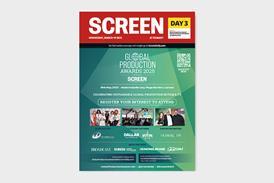





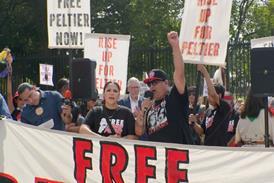



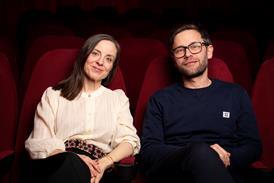
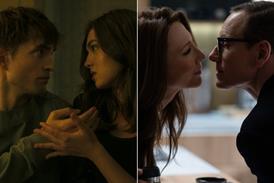
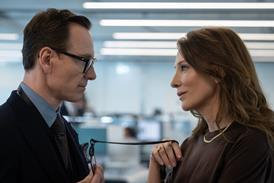







No comments yet